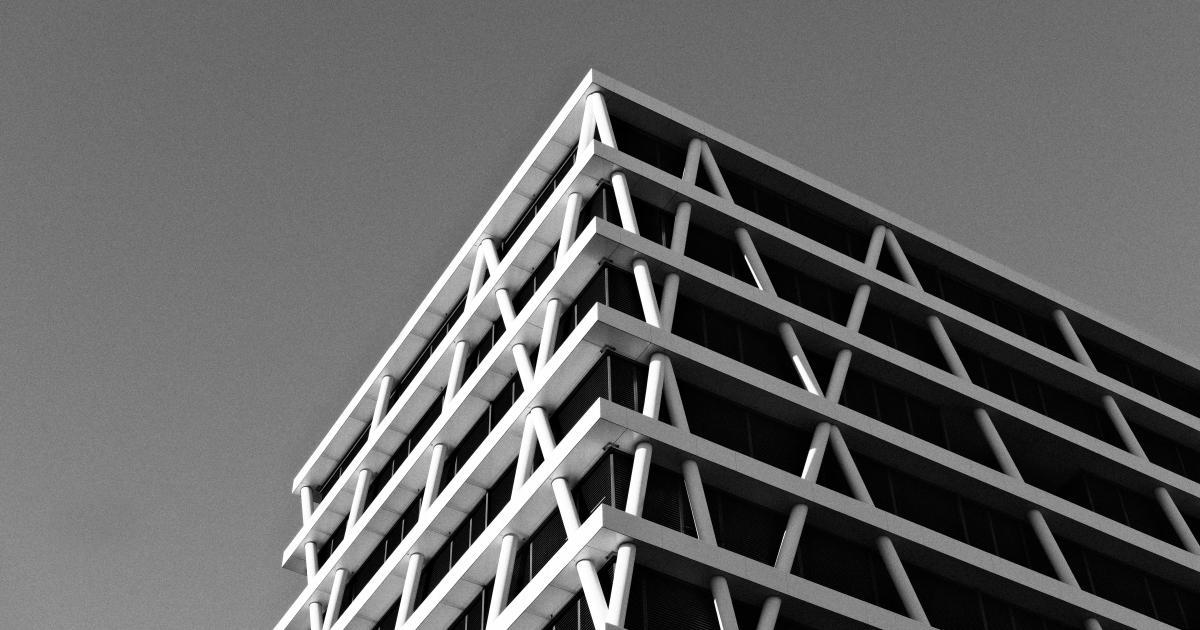Flat Site Architecture vs Deep Site Architecture: Which is Better for SEO?


In the ever-evolving world of digital marketing, the structure of your website can have a significant impact on its search engine optimization (SEO) performance. Two primary site architectures have emerged as the focal points of this discussion: Flat Site Architecture and Deep Site Architecture. Understanding the pros and cons of each approach is crucial in determining which strategy will yield the best results for your online presence.
Understanding Flat Site Architecture
Flat Site Architecture, also known as a "one-level" or "shallow" structure, is characterized by a website with a limited number of main pages, typically less than five to seven. These pages are directly accessible from the homepage, without the need for extensive navigation through multiple levels of subpages.

In a Flat Site Architecture, the homepage serves as the central hub, with all the primary content and navigation options readily available. This structure aims to provide users with a straightforward and efficient browsing experience, minimizing the number of clicks required to access the desired information.
Benefits of Flat Site Architecture
Improved User Experience: The simplicity of a Flat Site Architecture makes it easy for users to navigate and find the information they need quickly. This can lead to lower bounce rates and higher engagement levels.
Faster Page Loading Times: With fewer levels of subpages, the overall website load time is typically faster, as there are fewer pages to render and fewer resources to load.
Enhanced Internal Linking: In a Flat Site Architecture, the homepage and main pages have a more direct relationship, allowing for effective internal linking and the ability to distribute link equity (or "PageRank") more evenly across the site.
Easier Indexing and Crawling: Search engine crawlers can more efficiently navigate and index a Flat Site Architecture, as they don't have to burrow through multiple levels of subpages to reach the content.
Challenges of Flat Site Architecture
Limited Content Organization: While the simplicity of a Flat Site Architecture can be beneficial, it may also limit the ability to organize and categorize content effectively, especially for websites with a large amount of information.
Potential for Keyword Cannibalization: When all the primary pages are directly accessible from the homepage, there is a risk of competing for the same keywords and diluting the overall SEO effectiveness.
Scalability Concerns: As a website grows and the number of pages increases, the Flat Site Architecture may become less efficient, potentially requiring a transition to a deeper structure to accommodate the expanding content.
Understanding Deep Site Architecture
Deep Site Architecture, often referred to as a "multi-level" or "hierarchical" structure, involves a website with a more complex navigation system, featuring multiple layers of subpages organized in a tree-like structure.

In a Deep Site Architecture, the homepage serves as the entry point, with various top-level categories or sections that lead to deeper levels of subcategories and individual pages. This structure allows for a more comprehensive and organized presentation of information, catering to the needs of websites with a large volume of content.
Benefits of Deep Site Architecture
Improved Content Organization: Deep Site Architecture enables effective categorization and organization of content, making it easier for users to navigate and find the information they are looking for.
Targeted Keyword Optimization: The hierarchical structure allows for more granular keyword targeting and optimization, as each subpage can focus on specific keywords or long-tail variations.
Enhanced Internal Linking: The deeper structure provides more opportunities for internal linking, allowing for the distribution of link equity and improved crawlability.
Scalability and Flexibility: As a website grows, a Deep Site Architecture can more easily accommodate the addition of new content and categories without compromising the overall structure.
Challenges of Deep Site Architecture
Potential for Increased User Friction: The additional layers of navigation in a Deep Site Architecture can make it more challenging for users to find the desired content, potentially leading to higher bounce rates and lower engagement.
Longer Page Loading Times: The presence of multiple levels of subpages can result in longer page loading times, as more resources need to be loaded and rendered.
Difficulty in Crawling and Indexing: Search engine crawlers may have a harder time navigating and indexing a Deep Site Architecture, as they need to burrow through the various levels of subpages to access the content.
Flat Site Architecture vs. Deep Site Architecture: Which is Better for SEO?
When it comes to determining the optimal site architecture for SEO, there is no one-size-fits-all solution. The choice between Flat Site Architecture and Deep Site Architecture depends on various factors, including the size and complexity of your website, the content structure, and your specific SEO goals.

SEO Considerations for Flat Site Architecture
Improved Crawlability and Indexing: The simplicity of a Flat Site Architecture makes it easier for search engine crawlers to navigate and index the content, as they don't have to traverse multiple levels of subpages.
Enhanced Link Equity Distribution: With the main pages directly accessible from the homepage, the link equity (or "PageRank") can be more evenly distributed across the site, potentially boosting the overall SEO performance.
Reduced Bounce Rates: The straightforward user experience of a Flat Site Architecture can lead to lower bounce rates, as users can quickly find the information they need without getting lost in a complex navigation structure.
Potential for Keyword Cannibalization: While the simplified structure can be beneficial, it's important to be mindful of potential keyword cannibalization, where the main pages compete for the same keywords.
SEO Considerations for Deep Site Architecture
Targeted Keyword Optimization: The hierarchical structure of a Deep Site Architecture allows for more granular keyword targeting and optimization, as each subpage can focus on specific keywords or long-tail variations.
Improved Content Organization and Findability: The deeper levels of navigation and categorization can make it easier for users to find the content they're looking for, potentially leading to higher engagement and lower bounce rates.
Enhanced Internal Linking Opportunities: The multi-level structure provides more opportunities for internal linking, which can help distribute link equity and improve the overall crawlability of the website.
Potential Challenges with Crawling and Indexing: Search engine crawlers may have a harder time navigating and indexing a Deep Site Architecture, as they need to burrow through the various levels of subpages to access the content.
Striking the Right Balance: Hybrid Approaches
In many cases, the optimal solution lies in finding a balance between the two architectures, creating a "hybrid" approach that combines the strengths of both Flat Site Architecture and Deep Site Architecture.

This hybrid approach may involve:
Leveraging Flat Design for the Homepage: Maintaining a simple, user-friendly homepage with direct access to the main content areas, while utilizing a deeper structure for the subpages.
Implementing a Tiered Navigation System: Organizing the website's content into a hierarchical structure, with top-level categories and subcategories, but ensuring that the most important pages are still readily accessible from the homepage.
Strategically Distributing Content: Carefully determining which content should be placed on the main pages versus the deeper subpages, based on factors such as search volume, user intent, and content importance.
Optimizing Internal Linking: Designing a robust internal linking structure that effectively distributes link equity and improves the overall crawlability of the website.
By adopting a hybrid approach, you can leverage the benefits of both Flat Site Architecture and Deep Site Architecture, creating a more balanced and SEO-friendly website structure.
Factors to Consider When Choosing Site Architecture
When deciding between Flat Site Architecture, Deep Site Architecture, or a hybrid approach, it's important to consider the following factors:
1. Website Size and Complexity
The size and complexity of your website should be a primary consideration. Flat Site Architecture may be more suitable for smaller websites with a limited number of pages, while Deep Site Architecture is often better suited for larger, more complex websites with a significant amount of content.
2. Content Structure and Organization
Analyze the way your content is structured and organized. If you have a well-defined hierarchy of categories and subcategories, a Deep Site Architecture may be more appropriate. However, if your content is more streamlined and can be effectively presented on a few main pages, a Flat Site Architecture may be the better choice.
3. User Behavior and Expectations
Consider the typical user behavior and expectations for your website. If your users prefer a straightforward, easy-to-navigate experience, a Flat Site Architecture may be more beneficial. Conversely, if your users are accustomed to a more comprehensive and categorized content structure, a Deep Site Architecture may be more suitable.
4. SEO Goals and Keyword Targeting
Evaluate your SEO goals and the specific keywords you aim to target. If you need to focus on broad, high-volume keywords, a Flat Site Architecture may be more effective. However, if you're targeting more specific, long-tail keywords, a Deep Site Architecture can provide the necessary granularity.
5. Website Growth and Scalability
Consider the potential for your website to grow and expand in the future. A Flat Site Architecture may be easier to manage in the short term, but a Deep Site Architecture may be more scalable as your website's content and structure become more complex over time.
6. Technical Considerations
Assess the technical capabilities of your development team and the content management system (CMS) you're using. Some CMSs may be better suited for implementing and maintaining a specific site architecture, and your development team's expertise can also influence the choice.
Conclusion
In the quest for optimal SEO performance, the choice between Flat Site Architecture and Deep Site Architecture is not a one-size-fits-all decision. It requires a careful evaluation of your website's unique characteristics, user behavior, content structure, and SEO goals.
By understanding the strengths and weaknesses of each approach, and potentially employing a hybrid strategy, you can create a website structure that balances user experience, content organization, and search engine optimization. Ultimately, the most effective site architecture will be the one that aligns with your business objectives and delivers the best results for your online presence.